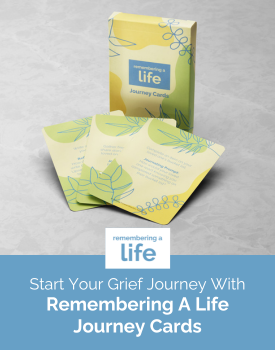In 2018, suicide was the 10th leading cause of death in the U.S. That statistic alone is troubling, but suicide is also the second leading cause of death for Americans ages 10-34, and the fourth leading cause of death for those ages 35-54. While we do not yet have a complete picture of the long-term impact of the COVID-19 pandemic on suicide deaths, experts agree that the many stressors and complications to physical safety, social interaction, financial status, and mental wellbeing may well culminate in an even greater rise in suicide deaths than we’ve seen over the last decade.
While the prevalence of suicide in our culture is in itself tragic, the grief of losing a loved one to suicide is often overwhelmingly isolating and, literally, unspeakable. After the death of a loved one to suicide, we may feel untethered from our understanding of the world, encased in shock that weighs on us like a block of ice, only to reach out for support that we may not receive.
I have been researching and teaching on suicide for fifteen years, but I was wholly unprepared when I received a phone call that a member of my family had died of suicide. Eventually, all of my work on suicide became helpful to me in piecing together the components of the loss and eventually, making a measure of peace and moving forward with it. However, for a number of months following the death, I sleepwalked through my life on little sleep, working and re-working all the details that I knew of that had led to the death. It has been years since this event occurred, and I still have not one clear memory of one lecture I gave or course that I taught in the semester following this loss. While I was lucky to have close friends and family who had patiently absorbed my endless and unsolicited mini-lectures on suicide for years, like all suicide loss survivors, I also had to contend with the cultural and individual stigmas surrounding suicide that can damage the grieving process.
If you are reading this post because you are a survivor of suicide loss, please know that you are not alone. If you are here because you wish to help survivors of suicide loss, then thank you. Your help is needed.
How and Why Does Suicide Happen?
Like most contemporary suicidologists, I understand suicide to be a biopsychosocial phenomenon. That is, suicide is an event that occurs after a number of negative factors and events – psychologically, sociologically, and, often, biologically – compound over time until the pain of living with them becomes so intense as to be unbearable to the person who is suffering.
We do not know why some people who experience all of the same negative factors and events die of suicide and some do not. We do know that just as we are all unique persons, the picture of suicidality, if experienced, will look different for each of us.
“Why?” is the word to which we most commonly return after experiencing a suicide loss. Why did this happen? Why didn’t I know how bad things were? Why didn’t they tell me? Commonly, we try to find a concrete, singular reason for the suicide death. This process can consume months and years, but it will likely not get us closer to understanding the exact, complicated, full set of factors that led to a loved one’s death. It may actually hinder our grieving process, especially if we are trying to place blame on one event or person for the death occurring.
Speaking and Sharing Your Loss
Suicide loss survivors often tell me how wary they are to share their stories of loss because of their past experiences in hearing myths like the ones discussed above; receiving judgment from friends, family, or religious communities; or feeling overwhelmed with the burden of having to simultaneously share their story while teaching someone about the reality of suicide and suicide bereavement. These concerns are understandable; navigating the months and years following a suicide loss is challenging enough without risking further harm from others.
However, we know that there are potentially tremendous benefits to telling our stories, or testifying our grief, and having others bear witness to them. In finding trusted friends, family, or helping professionals, you may be able to acknowledge the pain that your loved one experienced as well as your own pain at the loss. You may be able to find new ways to memorialize your loved one that incorporate a more complex understanding of their death. You may find comfort in undertaking your continued grieving process without bearing the burden of doing so alone, and in doing so, you may also find a community of survivors. Moving forward with one’s life after a suicide loss is one of the most difficult processes we undertake as grievers, but identifying and building a community that can support you reinforces that you are not alone, that there is great work to be done to support others who are also grieving, and that there is a need to speak out about suicide as well as to advocate for suicide prevention in the future.
November 21, 2020 is International Survivors of Suicide Loss Day. To find events and additional resources, or to read and share stories of suicide losses, I encourage you to visit the American Foundation for Suicide Prevention’s website at www.afsp.org.
988 Suicide and Crisis Lifeline
If you or someone you know is struggling or in crisis, help is available. Call or text 988 or chat 988lifeline.org. Veterans, press 1 when calling.


